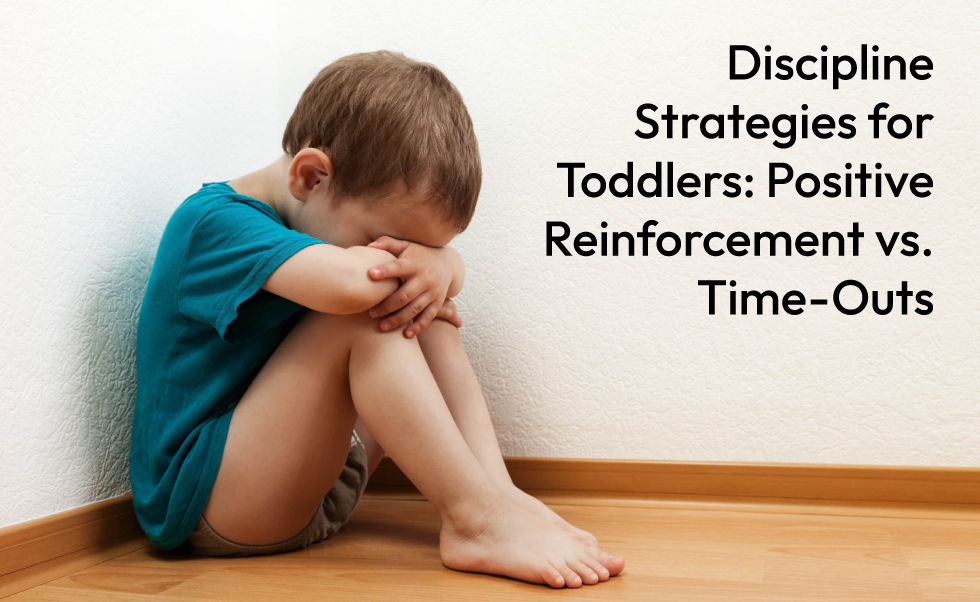Raising a toddler can be a joyous yet challenging phase for parents. One of the most critical aspects of parenting during this stage is disciplining your child effectively. Two popular methods often discussed are positive reinforcement and time-outs. Both have their advocates and detractors; understanding their nuances can help you make informed decisions about what might work best for your child.
This blog will explore these strategies in detail and provide practical tips to help current and upcoming mothers navigate toddler discipline.
Understanding Positive Reinforcement
Positive reinforcement involves rewarding desired behaviors. The underlying principle is that behaviors followed by positive outcomes are likely to be repeated. This method fosters a nurturing and supportive environment where children learn what is expected through praise and rewards.
Benefits of Positive Reinforcement:
- Builds Self-Esteem: Regular praise and rewards can boost a child’s confidence and self-worth.
- Strengthens Parent-Child Bond: Positive interactions help build a loving and trusting relationship.
- Promotes Good Behavior: Children learn to associate good behavior with positive outcomes, making them more likely to repeat those behaviors.
Practical Tips for Positive Reinforcement:
- Be Specific: Instead of saying “Good job,” specify what the child did right, like “I’m so proud of you for sharing your toys with your friend.”
- Use Tangible Rewards Sparingly: While occasional tangible rewards like stickers or small treats are effective, relying too much on them can make the child expect a reward for every good deed.
- Consistency is Key: Consistently praise good behavior to reinforce the desired actions.
Understanding Time-Outs
Time-outs involve temporarily removing the child from a situation where they are misbehaving. The idea is to give the child time to calm down and reflect on their behavior. It is a form of negative punishment that aims to decrease undesirable behavior by taking away something the child enjoys.
Benefits of Time-Outs:

- Immediate Consequence: Provides an immediate response to undesirable behavior.
- Teaches Self-Regulation: Helps children learn to manage their emotions and behaviors.
- Clear Boundaries: Establishes clear limits and consequences for inappropriate actions.
Practical Tips for Time-Outs:
- Designate a Time-Out Spot: Choose a quiet, distraction-free area where the child can sit and calm down.
- Keep it Short: Time-outs should be brief, generally one minute per year of the child’s age.
- Explain the Reason: Explain to the child why they are in time-out and what behavior led to it.
Choosing the Right Approach
While positive reinforcement and time-outs have merits, the key to effective discipline lies in understanding your child’s unique temperament and needs. Here are some factors to consider:
- Child’s Personality: Some children respond better to positive reinforcement, while others might need the clear boundaries provided by time-outs.
- Consistency: Consistency is crucial for whichever method you choose. Mixed signals can confuse your child and undermine your efforts.
- Age Appropriateness: Tailor your approach to your child’s developmental stage. Younger toddlers might not understand time-outs as effectively as older ones.
Integrating Both Approaches
In many cases, a combination of positive reinforcement and time-outs can be the most effective strategy. Here’s how you can integrate both:
- Set Clear Expectations: Communicate the behaviors you expect from your child. Use positive reinforcement to encourage these behaviors and time-outs for when rules are broken.
- Balance Praise and Consequences: Use praise and rewards to highlight and encourage good behavior while using time-outs as a consequence for inappropriate actions.
- Teach Problem-Solving Skills: Help your child understand why certain behaviors are unacceptable and guide them in finding better ways to express themselves.
Practical Scenarios and Solutions
To provide more concrete guidance, let’s explore a few common scenarios and how to handle them using both strategies:
Scenario 1: Tantrums in Public
- Positive Reinforcement: Before going out, explain to your child what behavior you expect and praise them when they follow through.
- Time-Outs: If a tantrum occurs, find a quiet spot to give them a brief time-out and explain why their behavior is unacceptable.
Scenario 2: Refusing to Share Toys
- Positive Reinforcement: Praise your child when they share their toys, reinforcing this good behavior.
- Time-Outs: If your child consistently refuses to share, a brief time-out can help them understand the consequences of their actions.
Conclusion: Finding Your Balance
Disciplining toddlers is a nuanced task that requires patience, consistency, and a deep understanding of your child’s needs. Positive reinforcement and time-outs are both valuable tools that, when used appropriately, can help guide your child toward better behavior. Remember, the goal of discipline is not just to correct behavior but to teach and nurture your child. Combining these strategies and tailoring them to your child’s unique personality can foster a positive and respectful environment that promotes healthy development and strong parent-child bonds.







